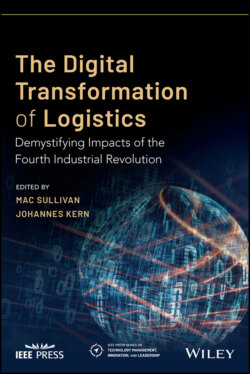Читать книгу The Digital Transformation of Logistics - Группа авторов - Страница 91
Use Cases for RPA in Logistics Track and Trace
ОглавлениеLogistics service providers are seeing customer expectations increasingly rise in areas where they simply do not have the margins to throw extra staff at the solution. E‐commerce and SaaS solutions are changing the visibility expectations of buyers. When you can price shop and buy a Boeing 747 online and track penny items turn by turn as they approach your house, the expectations in the business‐to‐business sector shift as well (Sheetz 2017). In international shipping, this has traditionally been a huge issue as carriers, forwarders, port authorities, rail operators, customs agencies, trucking companies, warehouses, and their customers often all have different levels of digital communication capabilities. In this scenario where a buyer of a container of goods in the United States wants to track his cargo from China to his warehouse door outside of Chicago, Illinois, they most often look to their freight forwarder as an aggregator of data and communication window. The freight forwarder typically does not directly own or control any of the carriers along the way, so they must find ways of grabbing event milestones to give updates to their customers. They have a few different options when it comes to retrieving such milestones. First, they could have direct integration with each of these carriers via EDI, although it requires a significant investment in mapping event fields from the carrier's system back to the forwarder's system. Second, they could have their staff locally go to each carrier website and retrieve the information as it is updated and key it back into their tracking database manually. Third, they could identify low‐cost labor in an offshore location to update and key in the data. Fourth, they could pay a third‐party aggregator for the milestones who often utilizes a combination of cheap labor and EDI connections. Lastly, they could train or hire someone to train an RPA bot that could go out and do the work of their local or offshore staff.
As previously mentioned, the key is to have a highly repeatable task. The task is mental and independent and does not have huge volumes happening at the same time if used by a small‐ to medium‐sized company. Typically, the forwarder and carriers are not updating their system's interfaces frequently, so training the bot to navigate to different fields on a carrier's website and the forwarder's ERP system is feasible. Managers need to consider whether or not their systems will be changing soon in terms of the interface or the architecture as that will help to also decide whether to use RPA (Penttinen et al. 2018). If, for example, your company just rolled out the logistics platform CargoWise and there are no updates to your ERP coming soon, then it might make sense to start an RPA pilot. A difficulty here would be in the formatting of identifications used by different carriers and modes of shipping; however, this task is surmountable. The key is figuring out which trigger would initiate the bots tracking of events and dictating how often it would need to go out to find those events.
